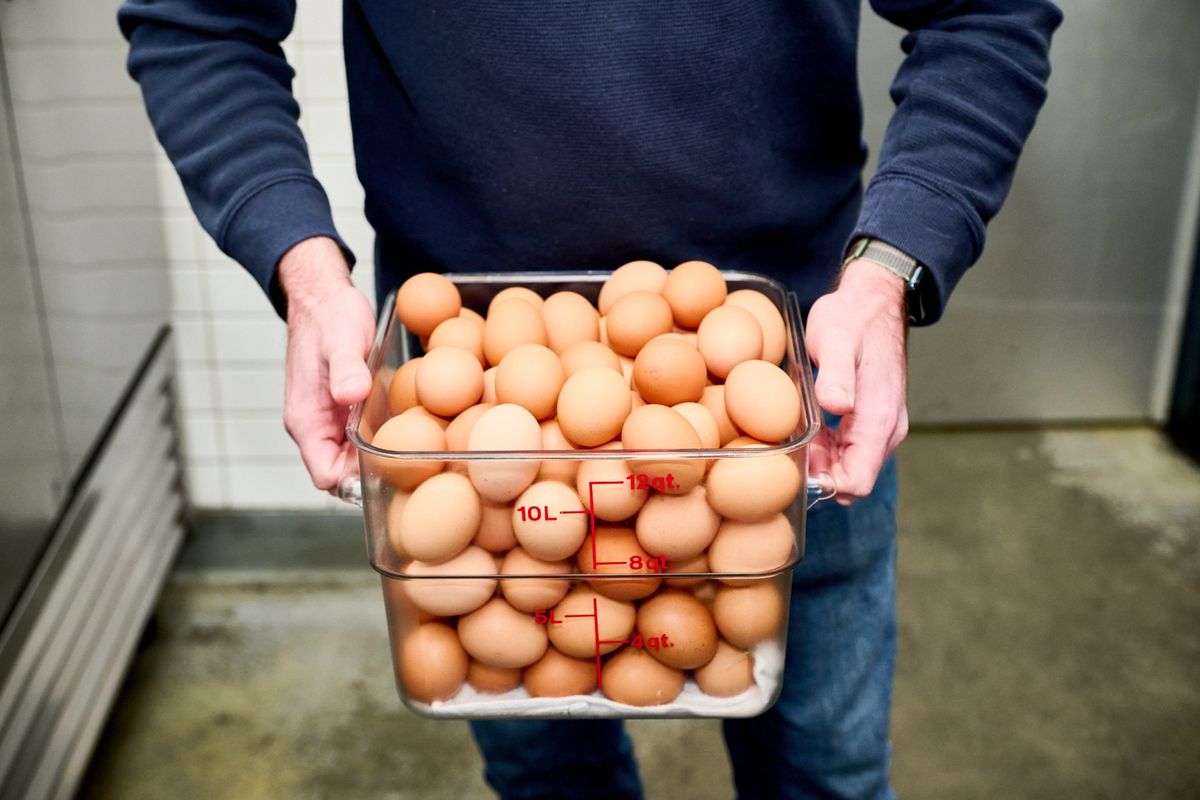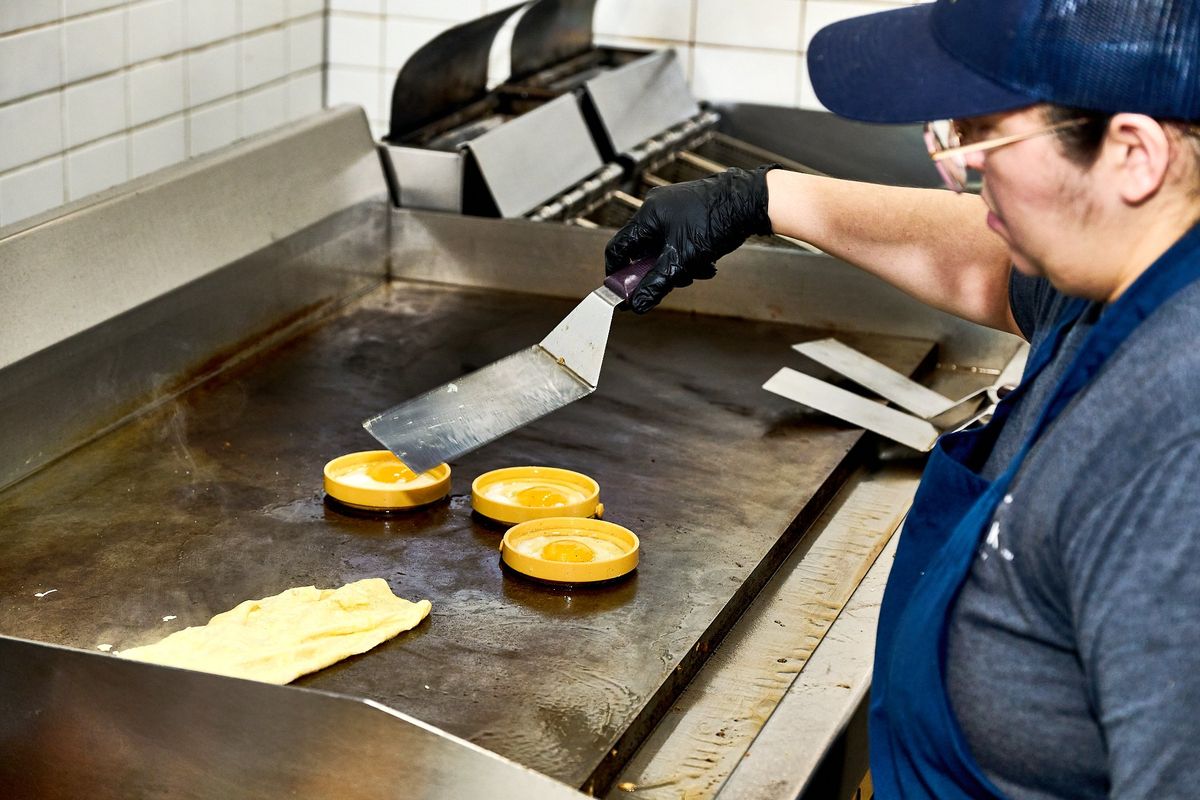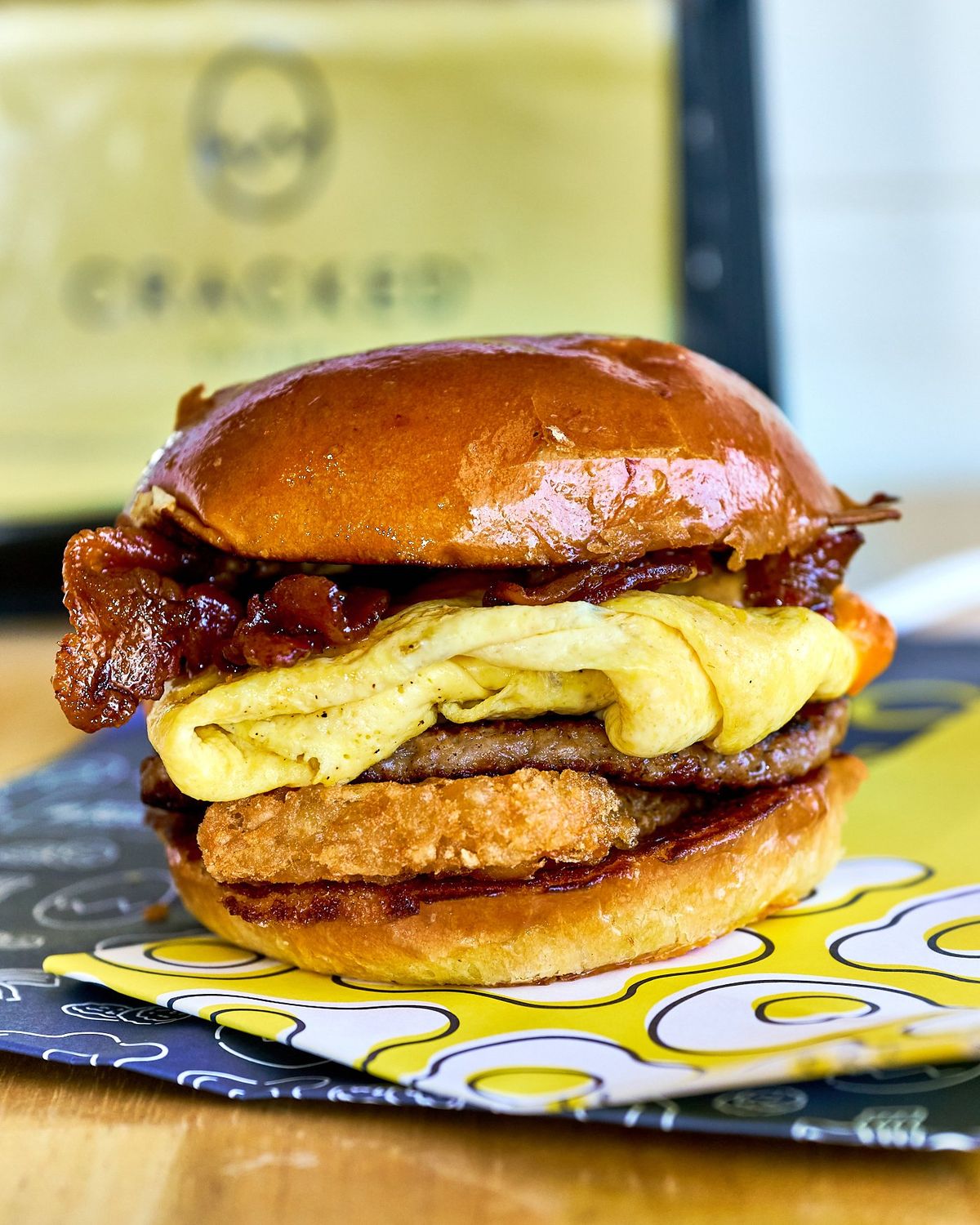When ‘egg’ is in your restaurant’s name, rising prices hit hard
Cook Ilcia Valeriano griddling eggs at Cracked Eggery. (Peggy Cormary for The Washington Post/for The Washington Post)
When egg prices started rising over the past year, restaurant co-owner Mike Tabb had to face a few options. But there were a couple of non-negotiables. For starters, there was no downplaying the egg options on his menus: The ingredient is literally the star of the show at the two locations of Cracked Eggery, where it shares space in bowls and between challah buns with ingredients including locally smoked salmon, lemon aioli and prosciutto.
It wasn’t like he could trim portion sizes, either, to make up for the added expense. “You can’t serve half a fried egg,” Tabb notes.
Egg prices are surging across the country, no thanks to the avian flu that continues to infect flocks. Nearly 19 million egg-laying birds were infected just in the past month, according to data from the Agriculture Department, which continues the classic supply-and-demand effect that has sent prices soaring with no end in sight.
Customers are seeing it on grocery store shelves. And restaurants where eggs are a signature dish – a booming category – are feeling the pinch harder than many.
Tabb has decided that for now, the only solution is to just wait things out. He hasn’t implemented a surcharge or lowered the quality of the cage-free eggs that he sources, through the distributor US Foods, from a farm in Pennsylvania. And he didn’t even consider the product that one provider offered, which essentially cut eggs with milk, for a lower price.
“I’ve bought some cheap eggs in my life, and they are super light yellow, no flavor, and it’s not a good experience,” he said. “We’re not going to lower our quality, so we’re just trying to weather the storm.”
At EggHolic, a chain offering Indian street food – with the titular ingredient as a centerpiece protein – the answer was a $1 surcharge on egg items, something that marketing director Bhavana Singh said the company didn’t take lightly. But with orders for as many as 1,800 eggs weekly across each of the chain’s 27 locations, they felt they didn’t have a choice.
“The margins are very low already, and then things like this happen,” Singh said, noting that some of the entrées on the EggHolic menu incorporate as many as five eggs and that the chain’s distributors are charging double what they did a year ago. “We had to come up with another way or we won’t be making any profits.”
They weren’t alone: Chains including Waffle House and Denny’s have tacked on an extra fee for eggs, and similar line items are popping up at delis and diners across the country. The spiking prices have also drawn attention to just how many restaurants have cropped up in recent years where eggs aren’t just a side dish, but the main character.
“It has quietly been one of the hottest growth trends in the industry over the past several years,” said Jonathan Maze, editor in chief of Restaurant Business. “You’ve got this whole generation of brands.”
Like so many dining trends, the proliferation of these egg joints around the country – often boasting punny or otherwise memorable names such as Eggslut, Egg Harbor and Eggsperience – was partly about evolution, he says. They stemmed from the popularity of diner-inspired brands such as Waffle House and IHOP, but they’ve been able to eat the breakfast of these bigger chains, often by eschewing 24-hour operations and focusing on higher quality.
These new brands simplify operations by focusing on breakfast and lunch, often with more upscale food and a single shift, making them more operationally efficient. Some, though, offer longer hours. EggHolic serves through dinner, and Cracked Eggery added late-night hours at its location in Washington D.C.’s Shaw neighborhood.
Another reason for their appeal? Customers looking to incorporate more protein in their diets. “People like that we have low carbs and high protein,” Singh said. “That’s what many customers are looking for.”
At Yolk, a chain with 14 locations, management opted not to adopt a tacked-on egg fee but rather to spread the cost increase across the board in its most recent menu update, marketing director Gianluca Pesce said. It’s also trying to highlight less-egg-intensive menu items. “Yolk is in our DNA, so we’re never going to get away from eggs, but we also have other options that people are going to be able to enjoy – pancakes, French toast, salads, sandwiches, soups,” he said.
Many restaurants are learning that ordering eggs is no longer a set-it-and-forget-it function. While some grocery shoppers are encountering policies limiting egg purchases to a couple of cartons – or finding that eggs simply aren’t available – most restaurants are able to get the eggs they need. But just like consumers who are scrambling to find deals on the increasingly expensive orbs, they are shopping more carefully than ever as the prospect of the avian flu stretches on.
Since Yolk’s suppliers’ prices differ and change frequently – and because each location takes in multiple deliveries a week to ensure fresh products – the company now looks daily at how to score the best deal. “We have people that are monitoring those prices and are able to then go to our managers and say, ‘Hey, order from this supplier vs. that other one,’” Pesce said. “We have to be willing to adapt.”
At Cracked Eggery, Tabb also finds himself tinkering with his egg-buying plans like a Wall Street wheeler-dealer. “It’s not like in the past where we could get ahead of things – you don’t want to over-order when tomorrow, the prices could adjust a little bit,” he said. “It’s kind of like playing the stock market.”
Quoate goes here Quoate goes here Quoate goes here Quoate goes here Quoate goes here Quoate goes here Quoate goes here Quoate goes here Quoate goes here. Name Name Attribution Attribution






